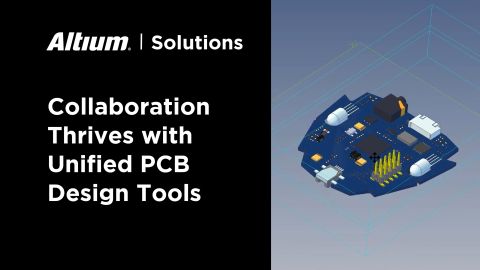Board Verification and Analysis: Comparing the Desktop and the Cloud
Respins are a killer.
They’re costly, both from a time and money perspective. Run through two or three, and you’re very likely to miss design release. If you have long-lead time test facilities and equipment involved, you’re pretty much guaranteed to throw the entire development project off schedule.
All that is why many engineering teams are increasingly turning to verification and analysis. If you can virtually check rules and simulate performance, then you are much more likely to sail through prototyping and testing in a single pass.
In this post, we’ll delve into what’s involved with verification and analysis and compare how both desktop and cloud approaches support it. Let’s get started.
Board Verification and Analysis: What Does it Take?
What exactly are we talking about here? What falls into the category of verification and analysis? There are a few groups of activities.
Signal Integrity and Power Integrity: Are you supplying enough power to all components so they'll run? Are the signals passed back and forth strong enough? In days past, engineers could complete this activity with enough time. However, today’s nets are incredibly complex. We’re quickly approaching a time where such verification may not be able to be done manually, even if engineers have the time.
Design Checks: Does your board have a short? That used to be a simple question to answer. However, with the increasing complexity of today’s nets, that question has become more difficult. A peer review used to catch it. Now, few have the time to do an in-depth review of someone else’s board.
Dynamic Excitation: If you put your board on a shaker table and set the frequency to your operating environment, will it break? How many cycles does it last? More importantly, as you move some components around, does the situation get better or worse? These types of analyses often involve passing information back and forth with an MCAD application to produce a 3D model for such structural analyses.
Thermal Management: High heat generation. Small cramped spaces. The combination of those two realities of modern board development makes evacuating heat from enclosures a difficult task. Passing the board to an MCAD application is the common path to running a Computational Fluid Dynamics (CFD) study.
That runs the gamut of verification and simulations for board development. Now, let’s dive into the implications of doing it on desktops compared to the cloud.
Board Verification and Analysis on the Desktop
When you run verification checks and analyses in an ECAD application on a desktop, there are a few constraints.
First, there are computer power constraints. Today’s nets can be very complicated. Structural and CFD models can also be large. Solving such checks and analyses can be taxing. On a desktop, the local processor limits how much power is available for the solve. That, in turn, means you might end up waiting anywhere from an hour to a day to get results.
Second, there are interoperability constraints. To build up a 3D assembly model of the board, you have to export the layout from your ECAD application and import it into the MCAD application. The two software tools are rarely on the same desktop, meaning the file must be shared through email, shared drives, or physical media. That injects yet another delay into the process of running structural or CFD analyses.
Board Verification and Analysis in the Cloud
Interestingly, there are a few advantages of running these verification tests and analyses in the cloud as opposed to the desktop.
First, the cloud has expandable compute power compared to the computer constraints on the desktop. Limits can often be defined for cloud applications to increase the number of cores dedicated to a task. That translates to getting results back much faster.
Second, a cloud-based ECAD application offers a novel solution for passing information back and forth with cloud-based MCAD applications. Web services for cloud applications can be leveraged to not only automatically send a model from one to the other, but associatively pass updates back and forth. Revisions can be exchanged in nearly real-time.
Why Does it Matter?
You might notice a common theme in these points: time. The timeliness of running verification checks, analyses, whole models, and discrete changes back and forth is critically important. Some organizations are not only looking at using verification and analysis as a way to validate a design is ready for prototyping and testing, but they are also looking for such results to guide design decisions. The idea is that timely and accurate information about the design leads to better decisions. That, in turn, leads to better performing, lower cost, on-schedule designs.
In that context, cloud solutions have a leg up on their desktop brethren.












